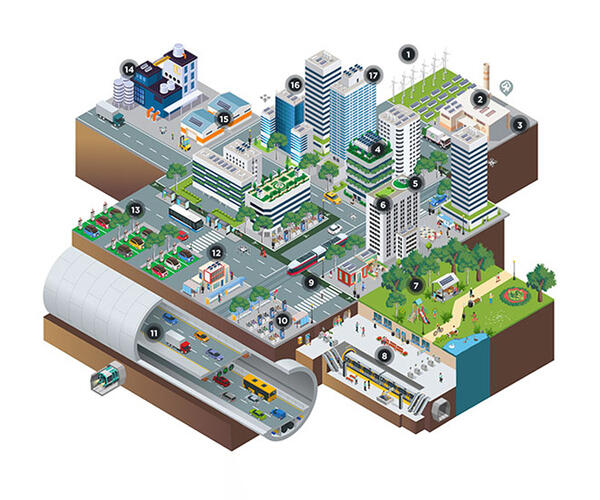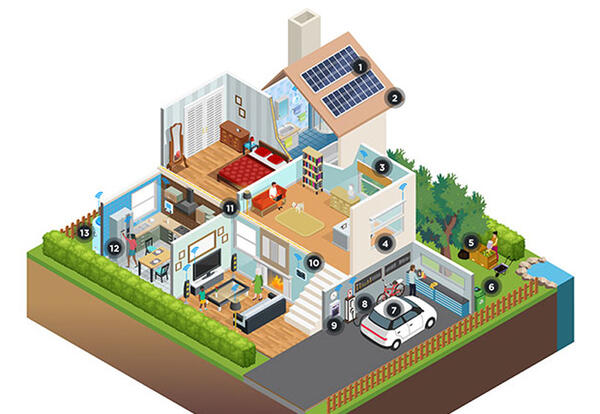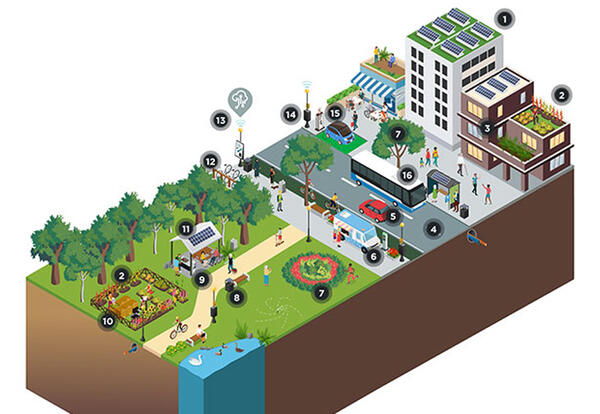
Net zero in your suburb or city
A collection of neighbourhoods, with a central business district and service infrastructure, come together as a precinct, suburb or city.
By joining forces, everyone living, working and visiting the city can play a role in achieving net zero at a precinct scale. This impact can be much larger, involving city-wide infrastructure and circular economy opportunities at an industrial level.
Councils, government and businesses can also support a net zero city by digitising service delivery and reducing customer trips to receive government services and by generating new ideas and commercialisation pathways for products and services to reduce carbon emissions – this can be done by hosting innovation challenges, fostering and funding pilot programs, and initiating research and development activities.
To learn how you can help, explore the graphic and checklist below.
Net zero in your suburb or city - steps we can take
- Distributed energy network and micro-grid
- Recycling facility to reduce waste
- Detailed data on precinct materials and waste to support circular economy opportunities
- New commercial buildings designed with low embodied and operational carbon impacts, and with renewable materials that can be reused
- Drones and EVTOL (electric vertical take-off and landing) supporting freight and logistics
- On-site management of organic waste
- High-quality public and open space, with waterways, recreational space, bushlands and parks, supported by water sensitive urban design, smart irrigation and other connected technologies
- Transit-oriented development and efficient public transport links around public transport hubs
- Connected active transport and micro-mobility paths and infrastructure, like bike racks, charging bays and air stations
- E-bike charging stations
- Multi-use tunnels, such as underground highways and transit lanes, to shift cars and trucks away from bike lanes and green spaces above, to encourage more pedestrian and active transport travel
- Accessible end of trip facilities
- Full integrated electric vehicle charging network
- Integrated water cycle management, including urban wastewater heat-recovery
- Industrial symbiosis - using the waste from one company as raw materials for another
- Heat capture from data centres recovered to power surrounding buildings
- Commercial premises fitted with sensors and connected technologies to be responsive, including predictive maintenance, thermal controls, movement activated lighting.
Net zero at home
Small changes to your home and how you run your household can deliver big reductions to your carbon footprint
Net zero in your neighbourhood
Community members, community organisations, businesses and local councils can work together to take action to reduce emissions as a neighbourhood.


